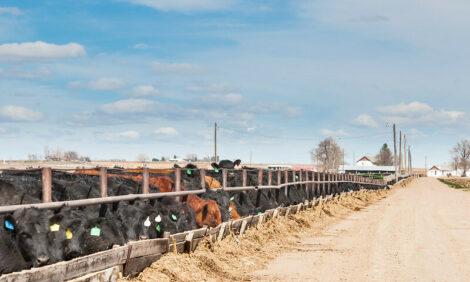



Countries Take Action To Safeguard Genetic Diversity
GLOBAL - A growing number of countries are taking steps to catalogue, conserve and better manage the genetic diversity of livestock in order to help safeguard the resilience of the world's food production systems, says an informal FAO survey released today (24 November).FAO cautioned, however, that much more needs to be done to better manage animal genetic resources.
The signs of progress come three years after 191 countries adopted the Global Plan of Action for Animal Genetic Resources following an FAO warning that one livestock breed had been lost per month during the 2000-2007 period and that 20 per cent of all livestock breeds were at risk of extinction.
Since then, countries have begun to take action in line with the Global Plan.
In the policy arena, ten countries report that they have established and are implementing national strategies for managing animal genetic resources. Twenty eight more have either finalized strategies and are moving towards implementation or are in the midst of developing their plans.
FAO's survey also shows that a range of activities are being undertaken on the ground. Examples include:
- Belgium is in the midst of a major survey of sheep, cattle and pig breeds, an effort that will result in genetic samples selected for storage in cryobanks. Bolivia is involved in a similar effort for camelids, guinea pigs, cattle, sheep, goats and pigs.
- Kenya is including information on livestock holdings as part of its human population census and is preparing a national breed survey to gather additional information.
- Ghana is recruiting and training specialists in the characterization and conservation of indigenous breeds.
- China has granted 138 indigenous breeds protected status and has established 119 conservation farms and gene banks at the state level.
No cause for complacency
Still, FAO cautions that progress has not been consistent across all world regions and that much more needs to be done.
The Agency's latest report on the status and trends of animal genetic resources reports that 21 per cent of livestock breeds continue to be at risk of extinction.
All told, some 1 710 breeds of livestock ranging from chickens to ostrich and from donkeys to cattle are in danger of extinction, compared to 1 649 in 2008 and 1 491 in 2006.
The report also warns that information on population size and composition of an estimated 35 per cent of known mammalian and avian breeds are not known, a gap which poses "a serious constraint to effective prioritization and planning of breed conservation measures."
Genetic diversity key for resilience, productivity gains
"Like a well-balanced stock portfolio, genetic diversity makes food production more resilient in the face of threats like famine, drought, disease and the emerging challenge posed by climate change," said Irene Hoffmann, head of FAO's Animal Genetic Resources Programme.
The existing animal gene pool contains valuable, irreplaceable resources that will be vital for food security and agricultural development in the coming decades, she said.
"Climate change and the emergence of new and virulent livestock diseases highlight the importance of retaining the capacity to adapt our agricultural production systems. Cataloguing and conserving this diversity will allow us to maintain and deploy the widest possible portfolio of genetic resources in order to increase the resilience of our food supply and develop improved breeds to help sustain food production."
FAO has developed a funding strategy aimed at channelling support towards improved animal genetic resource management and strengthening international cooperation for assisting developing countries implement the Global Plan of Action for Animal Genetic Resources.
Further Reading
| - | You can view the survey by clicking here. |
| - | You can learn more about FAO's efforts to assist countries in the management of their animal genetic resources by clicking here. |
TheCattleSite News Desk


